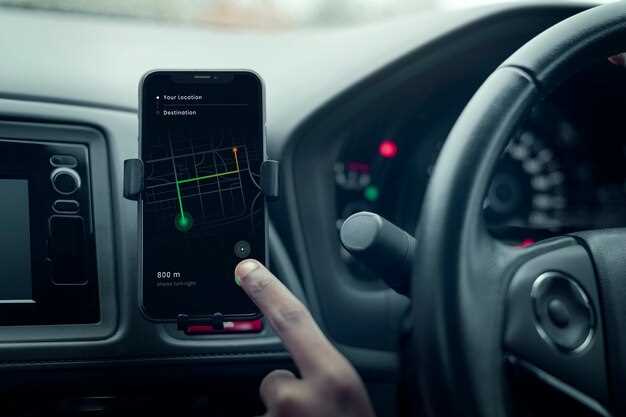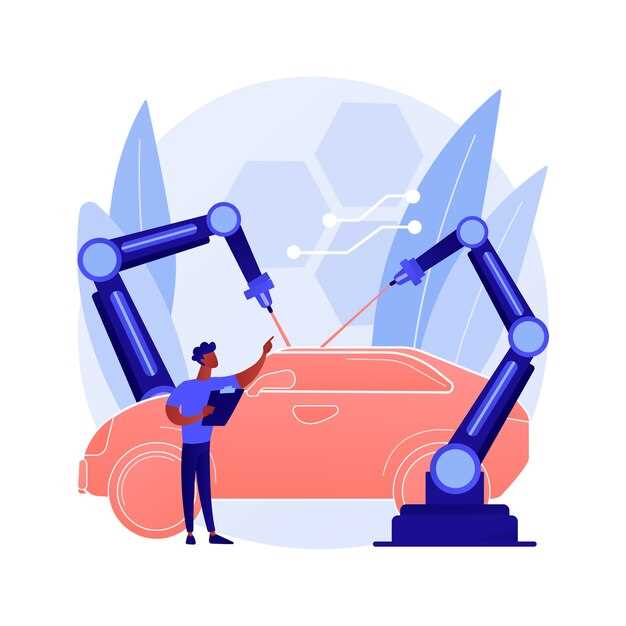Integrating augmented reality (AR) into car dashboards significantly improves driver experience and safety. By overlaying crucial information onto the real-world view, AR helps drivers stay informed without diverting their attention. For instance, essential data such as speed, navigation prompts, and hazard alerts appear directly on the windshield, enabling seamless interaction with the environment.
This technology not only reduces the need to glance at traditional displays but also enhances situational awareness. Real-time navigation updates enhance route clarity, guiding users with precision. With features like lane departure warnings and collision alerts presented in a visually intuitive manner, drivers can make quicker decisions, resulting in a safer driving experience.
Innovative companies lead the charge in adopting AR in their vehicle designs. For example, brands like Mercedes-Benz and BMW are now incorporating AR displays, showcasing road conditions and vehicle diagnostics through sophisticated projection methods. Adopting such systems can elevate the standard of any vehicle, attracting tech-savvy consumers eager for modern functionalities.
Moreover, AR’s adaptability means it can integrate with various driver-assist features, offering customized driving aids. From adjusting speed limits to optimizing fuel efficiency, the potential applications of AR technology are extensive. As this tech becomes more accessible, enhancing personal and vehicle interaction redefines the future of driving.
Understanding the Basics of Augmented Reality in Vehicles
Augmented Reality (AR) significantly enhances modern vehicle dashboards by overlaying digital information onto the physical environment. This technology is transforming how drivers interact with their vehicles and the outside world.
AR systems utilize sensors and cameras to collect data about a vehicle’s surroundings. This information is then processed and displayed on a heads-up display (HUD) or the vehicle’s infotainment screen. These overlays can include navigation prompts, speed limits, and alerts about nearby hazards, improving awareness and safety.
Key features of AR in vehicles include:
| Feature | Description |
|---|---|
| Navigation Assistance | Displays turn-by-turn directions directly on the road, reducing the need to look away from the driving path. |
| Real-Time Data | Shows vital information, such as vehicle speed and fuel levels, integrated into the driver’s field of vision. |
| Hazard Alerts | Highlights potential dangers, like pedestrians and obstacles, enhancing spatial awareness. |
| Customization | Allows drivers to tailor the information displayed based on their preferences and driving habits. |
Implementing AR in dashboards can minimize distractions. By integrating essential information into the driver’s line of sight, it reduces the need to look away from the road. This precise alignment supports drivers in making timely decisions.
The development of AR technologies in vehicles leverages advancements in computer vision, machine learning, and graphics. These technologies work together to create seamless integrations that provide real-time data processing and visualizations tailored for a dynamic driving experience.
Future trends indicate a growing interest in increased interactivity within AR systems. Voice-activated commands and gesture controls are helping to create a more engaging environment, allowing drivers to interact with their AR dashboard while keeping their hands on the wheel.
Embracing AR technology in vehicles not only enhances functionality but also sets a new standard in automotive design, paving the way for smarter, safer driving experiences.
Key Technologies Behind AR Dashboards: A Technical Overview
To implement augmented reality (AR) dashboards effectively, automakers utilize several key technologies that enhance both user experience and safety. First, advanced display technologies such as Head-Up Displays (HUDs) project essential information directly onto the windshield, allowing drivers to keep their eyes on the road. These displays utilize high-resolution projectors and optical systems to ensure clarity under various lighting conditions.
Next, computer vision plays a critical role in recognizing the driving environment. By employing cameras and sensors, AR systems analyze real-time information about road conditions, landmarks, and vehicle movement. This data processing supports features like navigation overlays that adjust dynamically based on the vehicle’s trajectory.
Depth sensing technology adds another layer to AR capabilities. Lidar and time-of-flight sensors measure distances to objects around the vehicle, creating a three-dimensional map of the surroundings. This depth perception enables more accurate placement of virtual elements, ensuring they appear anchored within the real world.
Artificial intelligence (AI) enhances user interactions by learning from driver behavior and preferences. This intelligent system not only customizes information display but also anticipates needs, providing contextually relevant suggestions like route adjustments or alerts for potential hazards.
Connectivity technologies such as Vehicle-to-Everything (V2X) communication enable AR dashboards to receive data from other vehicles and infrastructure, enriching the driving experience. This connectivity allows for features like real-time traffic updates and hazard warnings, facilitating a safer journey.
Finally, robust software integration is essential for synchronizing these technologies seamlessly. A well-architected software ecosystem manages the interactions between sensors, displays, and user inputs, ensuring a fluid experience that boosts confidence while driving.
Real-World Applications: How AR is Changing Driver Interaction
Integrating augmented reality (AR) into car dashboards enhances driver interaction by providing critical information directly in their line of sight. For instance, AR displays speed, navigation directions, and safety alerts through a heads-up display, promoting safer driving without the need for drivers to look away from the road.
Brands like BMW and Mercedes-Benz lead the way, featuring AR navigation that projects directions onto the windshield. This technology guides drivers using real-world landmarks, making it easier to follow routes without confusion.
AR also personalizes the driving experience by allowing drivers to customize their interface. For example, Tesla enables users to rearrange dashboard elements and choose visual themes, ensuring that critical information is always easy to access.
Safety features benefit significantly from AR. Drivers receive real-time hazard warnings, such as detecting pedestrians or vehicles in blind spots. This functionality reduces the likelihood of accidents by giving immediate awareness of potential dangers.
Moreover, augmented reality enhances vehicle diagnostics. Some manufacturers provide real-time performance data through AR, displaying engine metrics or tire pressure directly on the dashboard. This insight helps drivers maintain their vehicles efficiently.
The use of AR apps, like those that connect to smart devices, further enriches the driving experience. These apps allow drivers to set conditions for their trips, from preferred routes to rest stops, all visualized through AR overlays.
By employing AR technologies, automakers are redefining how drivers interact with their cars, making driving safer, more enjoyable, and tailored to individual preferences.
Safety Improvements: AR Features That Enhance Road Awareness
Integrate heads-up displays (HUD) into car dashboards to project essential information onto the windshield. This setup enables drivers to access speed, navigation directions, and alerts without taking their eyes off the road. Research indicates that HUDs can reduce the glance time needed to check instruments by up to 50%.
Utilize augmented reality navigation systems that overlay directions onto live images of the road. These systems help drivers perceive their surroundings better and follow route guidance intuitively. Real-time updates, such as traffic conditions and road hazards, enhance situational awareness and decision-making.
Implement collision warning features that utilize AR to highlight potential threats in the driver’s field of vision. Visual indicators can alert drivers to pedestrians, cyclists, or other vehicles in proximity, allowing for timely reactions. Studies show that such systems can decrease accident rates by alerting drivers to hazards up to two seconds earlier.
Offer virtual lane reminders that display boundary indicators directly on the road via AR. This feature assists drivers in maintaining proper lane discipline, particularly on highways or in poor weather conditions. Clear visual cues reduce the likelihood of unintentional lane departures.
Incorporate augmented reality sensors that provide real-time obstacle detection around the vehicle. These sensors can project highlighted paths and safe distances when maneuvering in tight spaces, such as parking lots. The visual feedback improves spatial awareness and minimizes the risk of collisions.
Engage haptic feedback systems that work in tandem with AR alerts. For instance, if a vehicle approaches an obstacle too quickly, the steering wheel can vibrate, reinforcing visual cues. This multi-sensory approach enhances responsiveness during critical moments.
Monthly software updates can optimize AR features with the latest traffic data and safety enhancements. Staying current with technological advancements ensures drivers benefit from improved functionalities and the most reliable information.
Encourage drivers to customize their AR experiences, allowing them to prioritize alerts and visuals that best suit their needs. Personalized settings enable more focused attention on what genuinely matters during their driving experience, increasing overall safety.
Customization Options: Personalizing Your AR Dashboard Experience
Choose from a variety of themes that reflect your personality. Options range from sleek, minimalist designs to bold, sporty aesthetics, allowing you to tailor the appearance of your AR dashboard to match your style.
Adjust the layout of displayed information based on your preferences. Focus on navigation, speed, or engine performance by rearranging widgets. This flexibility makes essential data more accessible during your drive.
Integrate personalized shortcuts for apps and features you frequently use. Quick access buttons ensure a smoother experience, letting you control music, navigation, or communication without distraction.
Edit colors and fonts to suit your visual comfort. A customizable color palette can contribute to better readability and reduce eye strain, especially during long trips.
Utilize voice commands to further streamline your interaction. Command your AR dashboard intuitively, allowing hands-free control over settings and features, which enhances safety on the road.
Explore how social integrations can keep you connected. Display notifications for messages or calls right on your dashboard, ensuring you stay informed while keeping your focus on driving.
Consider adjusting the level of information displayed. Some drivers prefer a minimalistic approach with only key metrics, while others appreciate rich data presentation. Tailor this aspect to your comfort level.
Check for updates that continuously bring new features and improvements. Manufacturers often release enhancements that can personalize your experience even further, offering options based on user feedback.
Take advantage of AR overlays. Opt for customized features like augmented navigation paths or personalized performance indicators, making your driving experience not just functional but also enjoyable.
The Future of AR in Automotive Design and User Experience
Integrating augmented reality (AR) into automotive design elevates user interaction, enhancing safety, navigation, and entertainment. Prioritize transparency with real-time displays of critical information, minimizing distractions for drivers.
- Real-Time Data Visualization: AR can project speed, navigation, and alerts directly onto the windshield, enabling drivers to maintain focus on the road. This interaction ensures vital information is always within view without requiring head movements.
- Customizable Dashboards: Users appreciate personalized interfaces. AR can allow drivers to select preferred displays, from traditional gauges to more advanced digital interfaces, adapting visuals to enhance user comfort and engagement.
- Enhanced Navigation: Implement AR for turn-by-turn directions superimposed on the real-world view. This technique reduces cognitive load as drivers can see navigation cues in the context of their environment.
AR facilitates seamless interaction through voice commands and gesture recognition, minimizing the need for physical controls. This approach supports safer driving by allowing interaction without diverting attention from the road.
- Augmented Maintenance Information: AR can guide users through troubleshooting car issues by displaying virtual overlays on affected components, making maintenance tasks straightforward and less intimidating.
- Immersive Entertainment: Passengers benefit from AR applications that project games, movies, or educational content onto the vehicle’s interior. This capability transforms the travel experience and keeps passengers engaged safely.
Collaboration between automotive manufacturers and AR developers can lead to innovative technologies that enhance functionality. Regular updates can introduce new features, keeping the vehicle experience fresh and responsive to user feedback.
Investing in AR technology supports ongoing development in vehicle design, making it an integral aspect of future car models. Companies should explore partnerships with tech firms, focusing on creating user-friendly interfaces that prioritize safety and accessibility. This focus on design will define the automotive experience for years to come.






